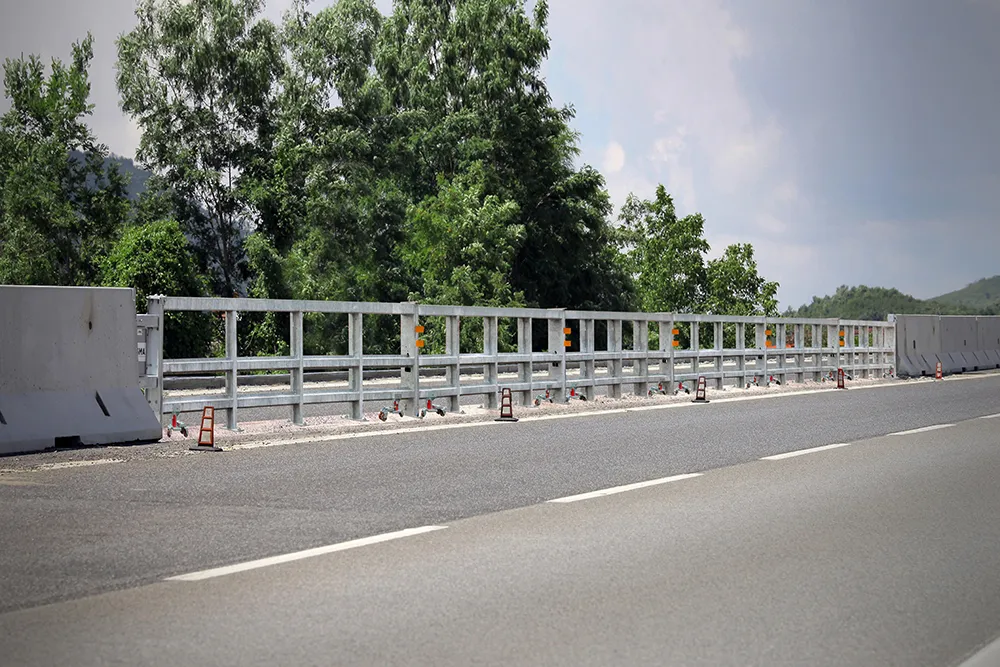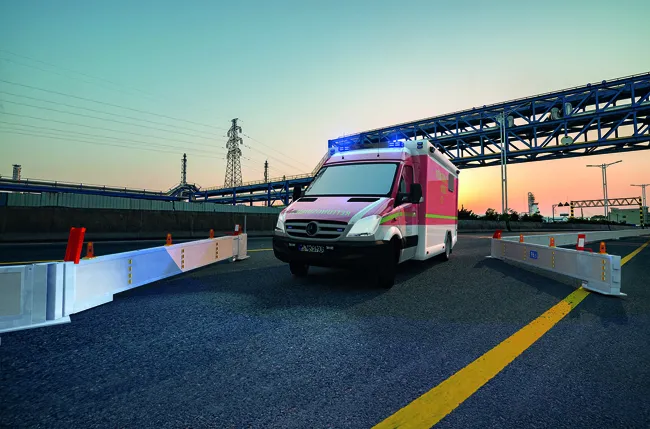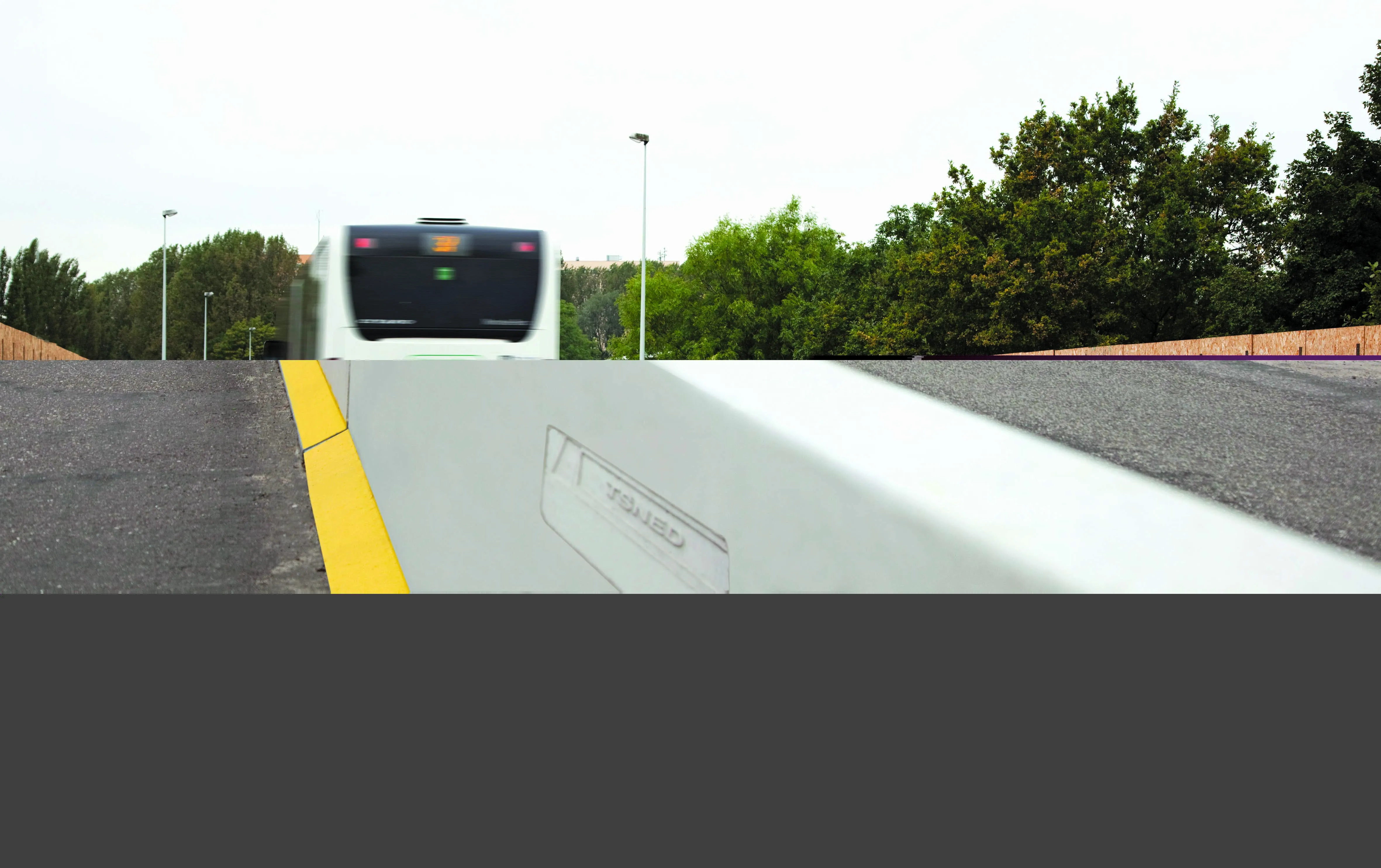
SMA Road Safety’s new Titanus barrier gate is tested in class H4B to allow for continuity of H4 barriers. Meanwhile, thanks to its W2 working width, SMA says that Titanus is ideal for areas characterised by a reduced length opening section.
The full system length is 40m with pole spacings of 1.5m. As well, the gate is light-weight, making it suitable for installation on bridges and viaducts, all without increasing drastically the loads on the bridge’s decks.
The new Titanus CE certified system is supplied in pre-assembled modules of 6m and is adaptable to different lengths. The gate can be opened in only two minutes and acts as an element of continuity between steel or concrete barriers through a suitable transition element. It is tested for containment level class H4b with an integrated sliding module in accordance with ENV 1317-4:2003.
Installation of the system requires only positioning and anchoring to the ground which takes place by means of internally threaded sleeves on which the pole plate is screwed. The connection of the terminal elements to the traffic barrier is done using adjustable connection pieces in order to correct the distance from the barrier during installation.
Finally, the gate can be swung fully open for the system’s entire length thanks to a series of small convenient dolly wheels on the lower half of the assembly.
“If a barrier gate exceeds 40m in length, it must be tested according to part 2 of EN 1317 as a longitudinal barrier,” explained Mauro Corsanici, crash analyst with SMA Road Sasfety. “But if it has a shorter length, it is treated as a transition, according to the voluntary norm EN 1317 part 4. For transitions, however, the standard says that interconnections with gaps greater than one class must be avoided, namely an H4b barrier must be connected with an H3 barrier gate and not H2.”
Finding a practical solution is hard but the Titanus fits the bill – and the regulations, he says. The Titanus is manufactured at SMA Road Safety’s factory located in Marcianise, just north of Naples, Italy.









